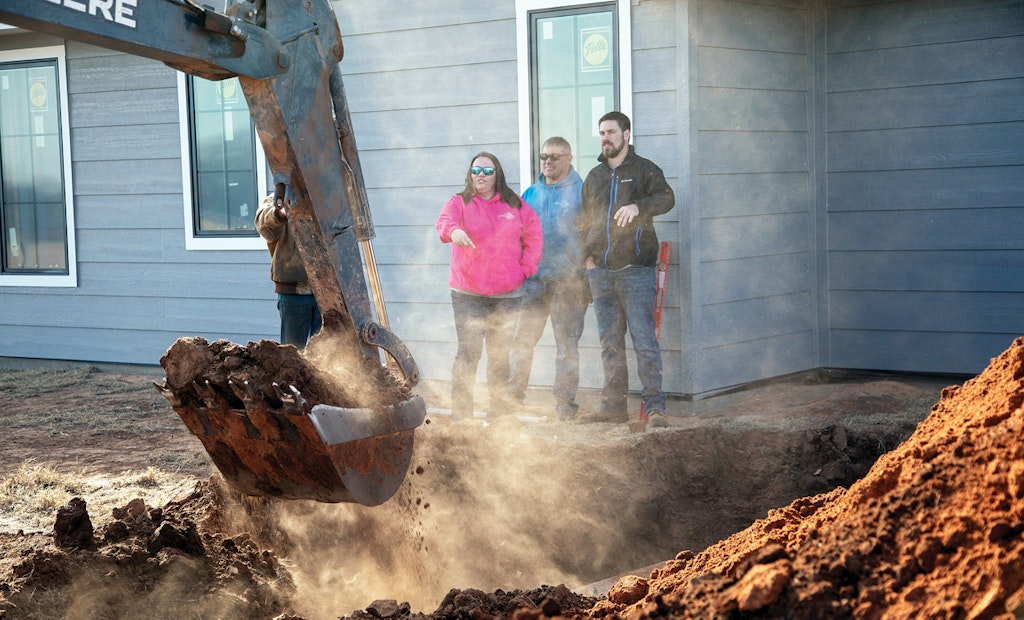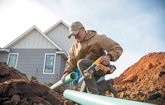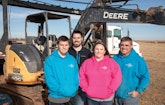
Dawn, Michael and Austin Rohrs look on as an excavation is dug for a new septic tank. (Photos by David McNeese)
For 20 years Dawn Rohrs worked as a drilling engineer in the oil fields in four states. When the oil industry crashed several years ago, she found herself laid off.
“I was driving my husband crazy sitting at home,” she recalls. “We decided we had better diversify, because...










